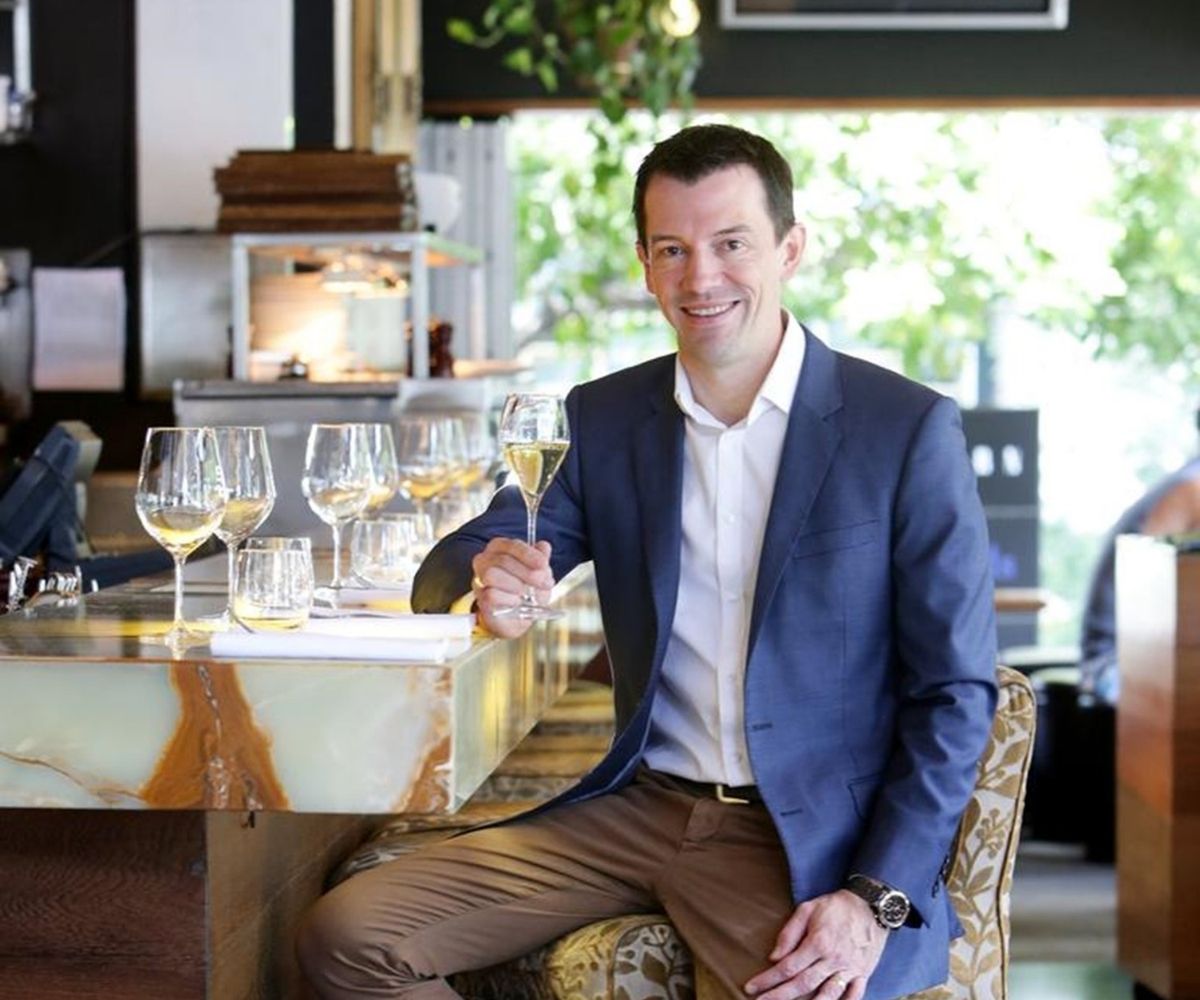Talking champagne with Tyson Stelzer

With the Spring Racing Carnival just around the corner, it’s only a matter of time before champagne is on almost everyone’s lips.
And not just as a topic of conversation.
So in that context, my recent catch-up with Australia’s pre-eminent champagne guru, Tyson Stelzer, was rather timely.
Although he’s a Brissie boy, this one time teacher has made his mark on the world stage since being named The International Wine & Spirit Communicator of the Year 2015 at the International Wine & Spirit Competition.
As an author, Tyson has been prolific having published 16 books, including six editions of his hugely successful resource, The Champagne Guide.
The 2020/2021 guide has just been released and once again sets the standard for encyclopaedic oenological works.
Comprehensive, contemporary and considered, Tyson’s guide is a must have for any champagne lover and for others, at very least, an impressive coffee table adornment.

The wines served at my long lunch with Tyson weren’t exclusively of the French fizz style, but included a couple of cracking examples of Champagne’s wares in the Pol Roger Blanc de Blancs Brut 2008 and the Egly-Ouiet Grand Cru Extra Brut VP Vieillessement Prolonge NV.
The latter is made by a cult grower from Ambonnay who is renowned for producing well aged and powerful wines of great depth. Though the opportunity to sample will be a rare treat given the lofty Grand Cru price tag.
You’d expect that a globetrotting champagne guru would have sampled his fair share of expensive drops, but when I tackled him to name the most expensive champers he’s ever sampled, he (rather coyly) suggested, “The rarest bottles of extremely old vintages from deep in the cellars of Champagne are impossible to put a price on, but invariably exceedingly valuable, if ever they were to be auctioned. The best I have tasted were Bollinger 1914, 1924, 1937 and 1945. The 1830 was probably the most valuable, but definitely go for the 1914 first when you are next faced with the choice!”
I can’t imagine stumbling across a 100-year-old bottle of champagne any time soon, but I did read about a single bottle of 1914 Bollinger selling at Sotheby’s in New York a few years ago for US$12,000 when packaged up with a winery visit. A tad steep for the moths in my wallet!
One shouldn’t miss an opportunity to take a bit of advice from any industry doyen, so I hit Tyson up for a few tips for champagne drinkers. My request that he name the best Australian sparkling wine he’s tried was timely, given his recent publication. “I’ve just completed the tastings for my Australian Sparkling Report and the standout was the highest pointed Australian sparkling white I’ve ever tasted: Arras EJ Carr Late Disgorged Méthode Traditionnelle 2004 en magnum. A breathtaking Arras, the pinnacle of Tasmanian sparkling and one of the great sparkling wines of the world, this is the finest sparkling white wine I have ever tasted outside of Champagne. Unfortunately, only 83 magnums were made”!
Perhaps not all that helpful when so few bottles were made, but when asked to name the best value champagne in the liquor store, Tyson gave a big wrap to a champagne that will set you back less than a “jolly green giant”. He said “Pierre Gimonnet & Fils Cuvée Fleuron 1er Cru Blanc de Blancs 2008 is still on the shelves, for as low as $99. This is the signature vintage cuvée of one of Champagne’s top growers, a blend of his best parcels from the top villages of the northern Côte des Blancs, boasting almost three-quarters of grand crus, a preposterous proportion for a wine of this price. Gimonnet’s goal here is to capture the taste of the domaine and the spirit of the season in a single blend of complexity”.
And no well-rounded discussion of a topic is complete withing dissing on a few of the impostors; so I asked which champagne the esteemed author of an industry leading champagne publication would be least likely to buy. There was certainly no surprise in Tyson’s response, “Champagne is the most expensive of all wine styles to produce and hence you get what you pay for. The cheapest champagnes on the shelves are the supermarket chain stores’ own brands and none of them are worth drinking. For just $5 or $10 more, you can get a fantastic house like Lanson or Piper-Heidsieck. Or if you’re on a strict budget, fantastic Australian sparklings like Seppelt Salinger Vintage and Ninth Island Rosé run rings around every champagne under $40.”
If you’re a lover of champagne and would like a bit of help in avoiding expensive mistakes at the bottle shop checkout, a copy of The Champagne Guide will only set you back about $45 – less than an average bottle of champagne and perhaps the best investment you’ll make this year!
First photo: Ric Frearson